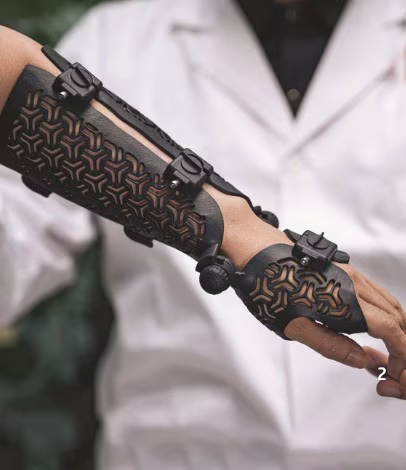



Industry Challenge: Turnaround Time & Skilled Labor Dependency
Traditional O&P workflows rely on skilled technicians for plaster work, lamination, and vacuum forming—processes that take days and are prone to human error. Skilled labor shortages make this harder.
HP MJF and Formlabs printers minimize technician time—freeing staff from manual labor and accelerating delivery.
Use our 3D printing service or your own Formlabs in-house system to get parts faster without relying on large inventories or outsourced tooling.
By simplifying production and reducing rework, clinics can serve more patients with fewer delays—even with limited staff.

Industry Challenge: Material Performance and Patient Comfort
Legacy materials like thermoplastics and foams often result in heavier, less breathable devices that compromise patient comfort or require frequent adjustments.
We offer PA 12 and Nylon 11 for rigid, durable orthotic components, along with TPU 90A for flexible, cushioned support ideal for prosthetic and orthotic parts.
Use lattice structures and digital design to reduce bulk while maintaining performance—especially valuable for pediatric or geriatric patients.
Post-processing options like vapor smoothing and surface blasting produce smooth, skin-friendly parts that improve wearability and increase patient satisfaction.
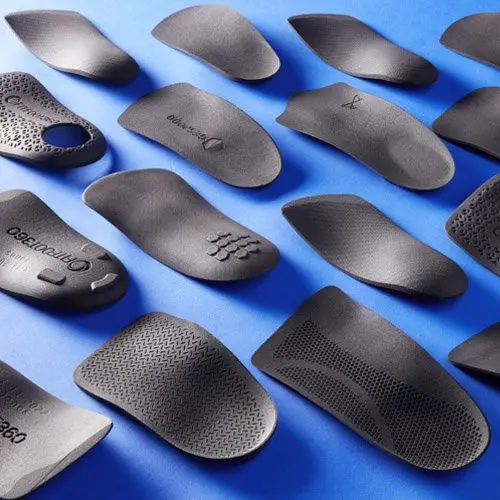
Industry Challenge: Customization & Fit Accuracy
O&P clinics rely on manual casting and mold-making to achieve patient-specific fit. This is time-consuming, inconsistent, and difficult to scale as demand grows.
Our workflow starts with a 3D scan and ends with a precision-fit orthotic or prosthetic part, produced using HP MJF or Formlabs printers—faster than traditional methods.
With CAD and 3D printing, we eliminate inconsistencies from manual casting and hand-modification. The result: repeatable accuracy for every patient.
Produce custom sockets, braces, or splints with detailed contours and undercuts that would be difficult, or impossible with traditional fabrication.

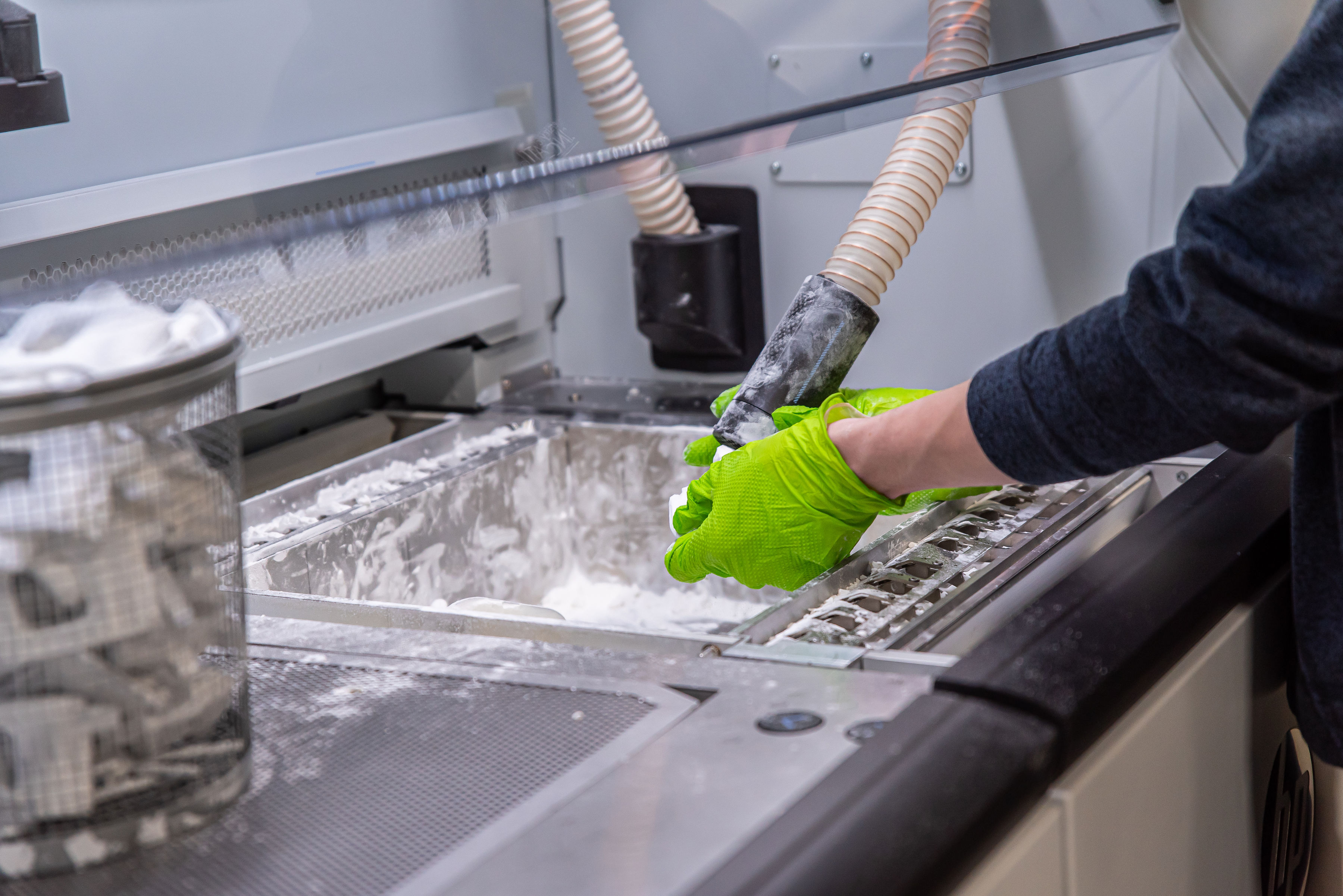
Orthopedic and healthcare service providers can take advantage of the diverse 3D printing technology available to produce finished items. The application of the end-use part, its size, production volume, and design complexities are some of the important criteria to consider when choosing a printing technology.
Ideal for: High-strength, production-grade orthotics and prosthetic components
MJF is a faster and more scalable powder-bed fusion process developed by HP. It produces exceptionally strong and consistent parts with a smooth finish and precise detail.
• Designfusion offers MJF 3D printing as a service — Access MJF without the upfront cost
MJF printers require significant capital investment, making them cost-prohibitive for many clinics. That’s why Designfusion provides on-demand HP MJF printing services—giving you access to industrial-quality parts without having to purchase or maintain the equipment yourself.
• Industrial-grade parts with fine detail and isotropic strength
• Ideal for load-bearing and weight-distributing O&P components
• Compatible with medical-grade materials like HP PA 12 and PA 12 GB
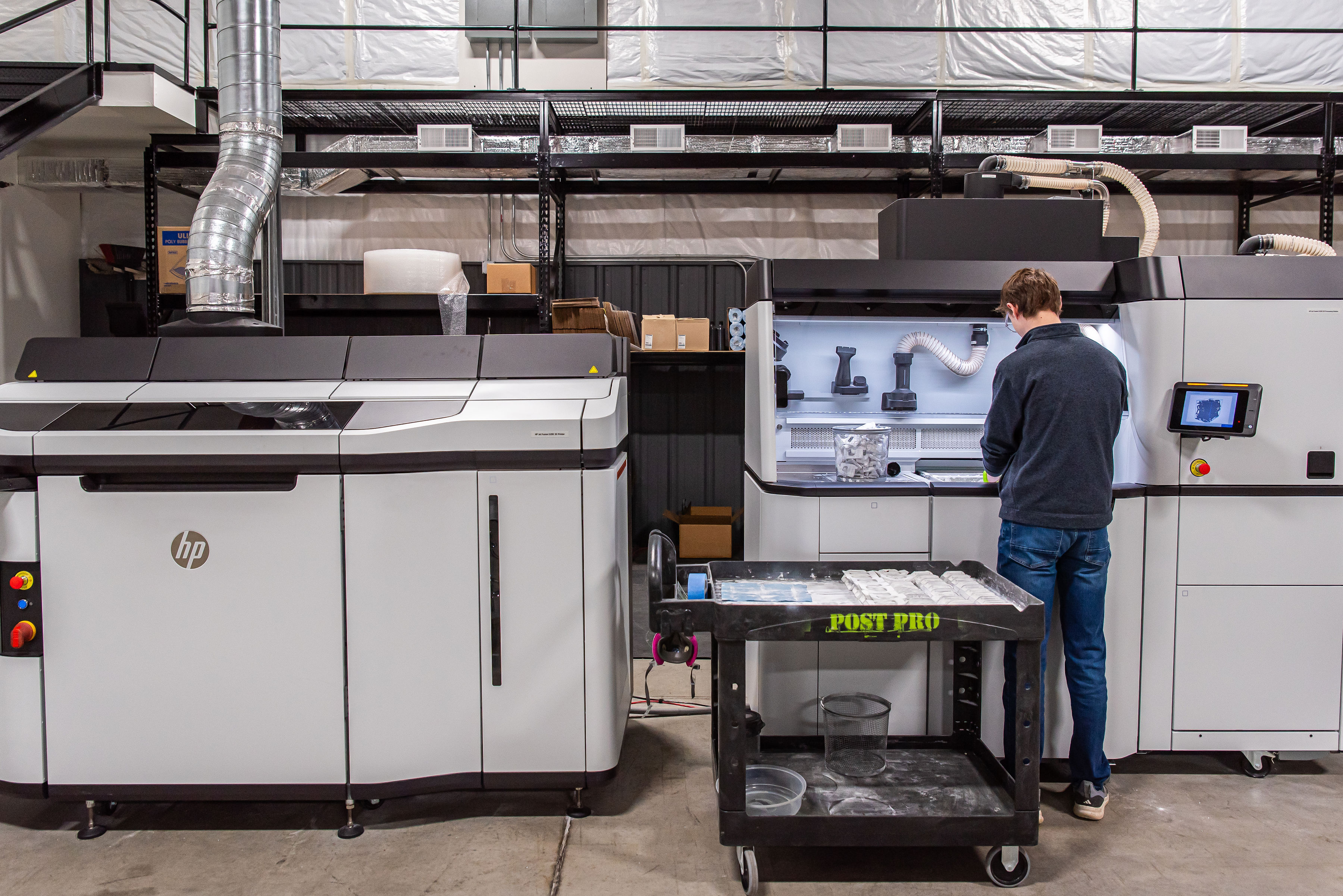
Best for: Functional orthotics, support braces, custom shells
SLS is a high-quality, cost-effective option for custom orthotic production. It uses powdered thermoplastics (like Nylon 12 and TPU) to build parts layer by layer—no support structures required.
• Prints multiple devices in one batch, ideal for scaling production
• Compatible with biocompatible, flexible and rigid materials
• Delivers excellent durability, precision, and part strength
• Great choice for clinics using the Formlabs Fuse 1+ 30W in-house
.png)
Best for: Clear, aesthetic, or highly detailed parts
SLA printing uses light-cured resin to produce smooth, high-resolution parts. It’s often used for splints, diagnostic molds, nasal protection masks, or helmet interiors, where surface finish and precision are critical.
• Compatible with biocompatible and elastic resins
• Excellent for low-load or cosmetic applications
• Works well with Formlabs Form 4 / Form 4L desktop SLA printers


"The traditional process for creating and fitting a leg prosthetic is long, complex, and uncomfortable for the patient,” said ProsFit Co-founder and CTO, Christopher Hutchison. “It involves taking a plaster cast, creating a mold, and casting resin around it. Often this involves several visits to the prosthetist and results in multiple fittings to get a device that is only marginally effective."
ProsFit uses HP Multi Jet Fusion and their PandoFit software to enable a fully digital workflow—clinicians scan a patient’s limb, adjust the design in CAD, and order a 3D-printed prosthetic socket directly. The result is a custom, regulated medical device with fast turnaround and consistent quality.
ProsFit’s digital workflow cut prosthetic socket delivery from weeks to days, reduced costs, and improved patient experience. Clinics saw up to 5× efficiency gains, while patients benefited from better aesthetics, faster fittings, and enhanced comfort. HP MJF enabled optimized part orientation and expanded application potential across orthotics and other medical devices.

They previously used other 3D printing methods for custom orthotics and prosthetics but faced issues with high costs, fragile materials, and poor aesthetics. Seeking a better solution, they looked to develop a 3D printed hand brace that would offer improved durability, visual appeal, and functional joint support.
OT4 was intrigued by HP Multi Jet Fusion (MJF) technology’s capability to produce high-quality parts made with the robust-yet-flexible HP 3D High Reusability (HR) PA 11 material.
3D printed orthotics "must continuously withstand strong elongating forces and must be flexible", according to Andreas Flamm, CEO of OT4.
With HP Multi Jet Fusion, OT4 can now produce durable, patient-specific orthotics like hand braces more efficiently and with better aesthetics. The technology eliminates the need for expensive post-processing, improves surface quality, and ensures consistent strength in all directions.
This enables optimized part nesting, reducing production costs by 30%. It also significantly shortens production time, saving orthotists up to 10 hours per part, while allowing for flexible, high-performance designs that improve patient quality of life.
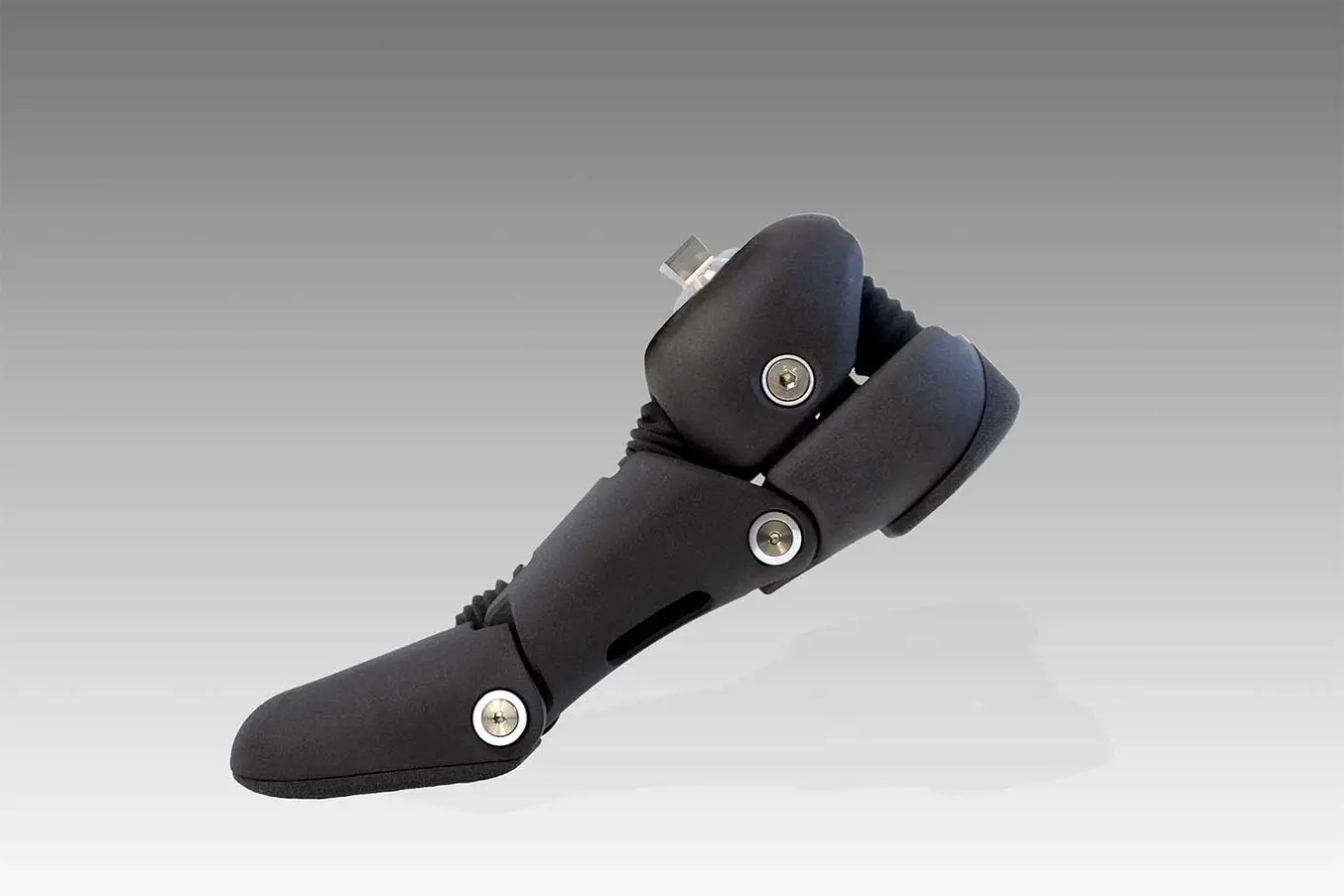
Creating a lightweight, affordable prosthetic foot typically faced high costs and design constraints—traditional methods like injection molding demanded expensive tooling (up to €300K for multiple sizes) and couldn’t support complex, patient-specific geometries.
C.P.T. leveraged Formlabs’ Fuse 1+ 30W SLS 3D printing to iterate quickly on concepts and produce durable parts in-house. They printed the Nova Foot’s structural components—such as forefoot, heel, and ankle sections—using Nylon 12 and TPU 90A, enabling intricate internal lattice designs, waterproof and high-traction soles, and customizable spring assemblies.
The Nova Foot became a cost-effective, NHS-covered prosthesis in Italy, combining lightweight design (roughly 550 g), exceptional customization (adjustable spring stiffness), and fast production. This digital approach slashed production costs, accelerated development cycles, and made high-performance prosthetics accessible to a broader patient base .
Markforged Simulation uses Finite Element Analysis (FEA) to test part performance virtually. It simulates real-world conditions, such as stress, strain, and deformation, and provides metrics like strength, stiffness, and safety factor. This ensures parts meet performance requirements before printing, eliminating costly trial-and-error cycles
Markforged Simulation is a top choice for optimizing 3D prints. It integrates directly with the Eiger software, allowing users to adjust settings such as fill density and fiber reinforcement automatically. Its optimization features ensure reduced material usage, faster print times, and parts that meet or exceed functional requirements.
Markforged Simulation reduces costs by minimizing material waste and avoiding overbuilding. The software optimizes designs virtually, cutting material usage by up to 85% and print time by 80% in some cases. This efficiency lowers production costs and accelerates time-to-market.
Eiger is Markforged's cloud-based software for managing 3D printing workflows. Markforged Simulation integrates seamlessly into Eiger, allowing users to validate and optimize part designs directly within the platform. It automates complex analysis processes, making it easy to configure parts for strength, stiffness, and cost efficiency.